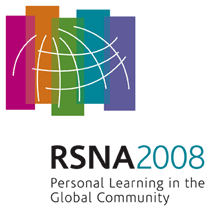
Abstract Archives of the RSNA, 2008
Sandra Brennan MBBCh, MSc, Presenter: Nothing to Disclose
Sunitha Thakur, Abstract Co-Author: Nothing to Disclose
Laura Liberman MD, Abstract Co-Author: Nothing to Disclose
Wei Huang PhD, Abstract Co-Author: Nothing to Disclose
Elizabeth A. Morris MD, Abstract Co-Author: Nothing to Disclose
D. David Dershaw MD, Abstract Co-Author: Nothing to Disclose
Hedvig Hricak MD, PhD, Abstract Co-Author: Nothing to Disclose
et al, Abstract Co-Author: Nothing to Disclose
To prospectively evaluate the diagnostic performance of 1H MRS in breast lesions with pathologic correlation.
After IRB approval and informed consent were obtained, we performed breast MRS on 86 women. All had a suspicious mass or biopsy-proven breast lesion measuring >1 cm on MRI. Single-voxel MRS data were collected from a single box volume which encompassed the lesion with a scanning time of approximately 10 minutes. MRS, interpreted blinded to pathology, was defined as positive if signal-to-noise ratio of the choline resonance peak was >2, negative otherwise. Lesions were prospectively classified as BI-RADS Category 2 to 6. The MRI, MRS, and pathology findings were correlated. Statistical analysis was performed.
Eighty-six patients with 87 lesions were imaged. The median MRI voxel size was 2.5 (range, 0.4 to 27.0) cc. Cancer was present in 0/5 BI-RADS 2, 7/22 (32%) BI-RADS 4, 3/4 (75%) BI-RADS 5, and 56/56 BI-RADS 6 lesions. A choline peak was present in 61/66 (92%) cancers vs. two (10%) of 21 benign lesions (p<0.0001, odds ratio 116, 95% confidence intervals 17-1022). The sensitivity of MRS was 92% (61/66), specificity 90% (19/21), positive predictive value (PPV) 97% (61/63), negative predictive value 79% (19/24), and accuracy 80/87 (92%). Five (8%) of the 66 cancers had no choline peak. Factors accounting for the five false-negative cases included: susceptibility artifact from localizing clips (n=3), poor shimming with broad lipid peak (n=1), and motion artifact (n=1). Two (9%) of 21 benign lesions, both BI-RADS 4 had a choline peak. Histologic findings were desmoid tumor (n=1) and lobular carcinoma in situ (n=1). For the 22 BI-RADS 4 lesions, if biopsy had only been performed in lesions with a choline peak, the PPV would have significantly (p<0.05) increased from 32% (7/22) to 78% (7/9). Biopsy would have been spared in 59% (13/22) with BI-RADS 4 lesions and in 13/15 (87%) with BI-RADS 4 lesions that were benign, without missing any of the cancers.
1H MRS can significantly improve the PPV of biopsy recommendations based on breast MRI. Our data suggest that incorporating MRS into the management algorithm for BI-RADS Category 4 lesions would maintain high sensitivity in the diagnosis of breast cancer while sparing most benign biopsies.
MRS as an adjunct to breast MRI may decrease the number of biopsies done for benign lesions.
Brennan, S,
Thakur, S,
Liberman, L,
Huang, W,
Morris, E,
Dershaw, D,
Hricak, H,
et al, ,
Proton Magnetic Resonance Spectroscopy in Breast Disease. Radiological Society of North America 2008 Scientific Assembly and Annual Meeting, February 18 - February 20, 2008 ,Chicago IL.
http://archive.rsna.org/2008/6018785.html

